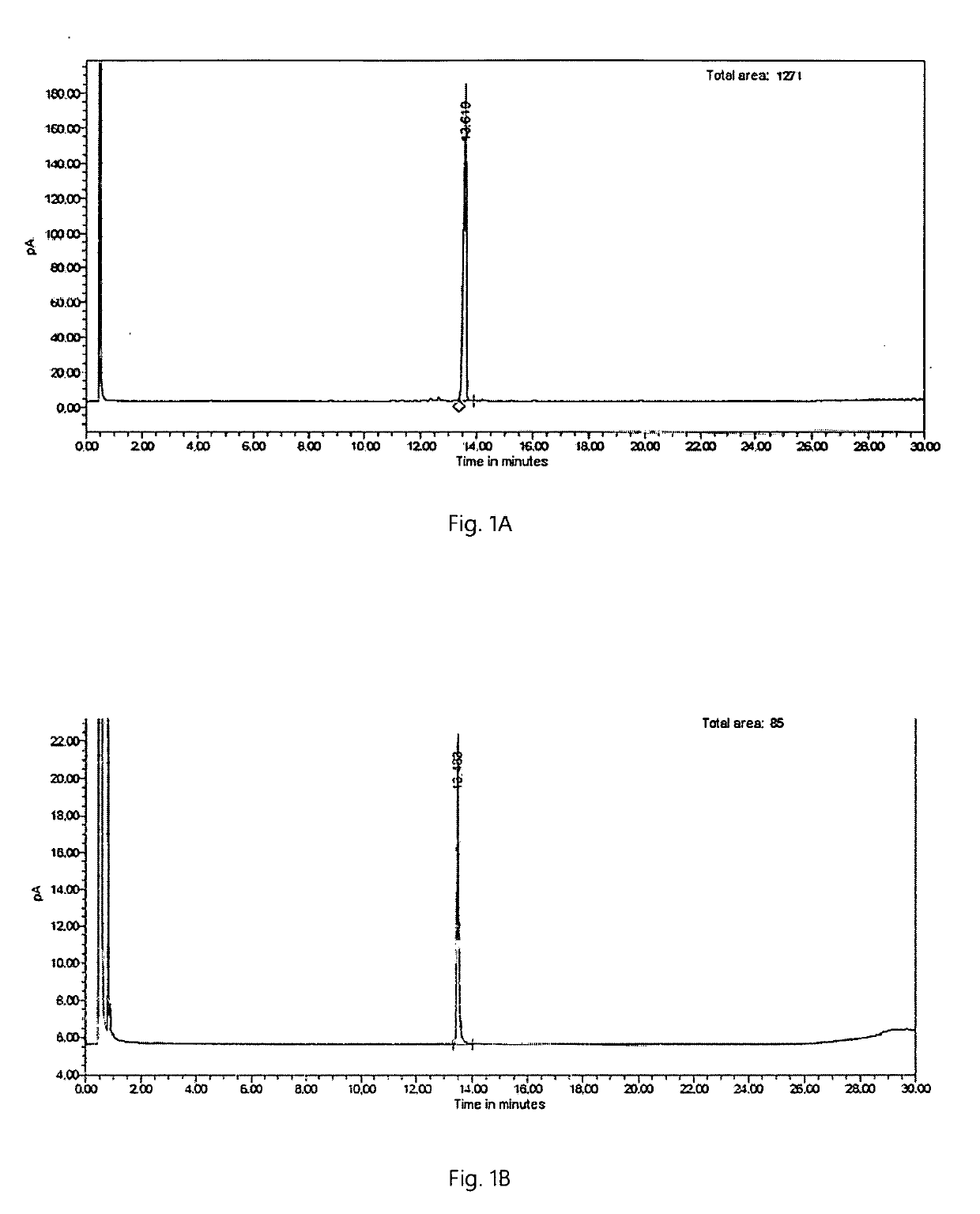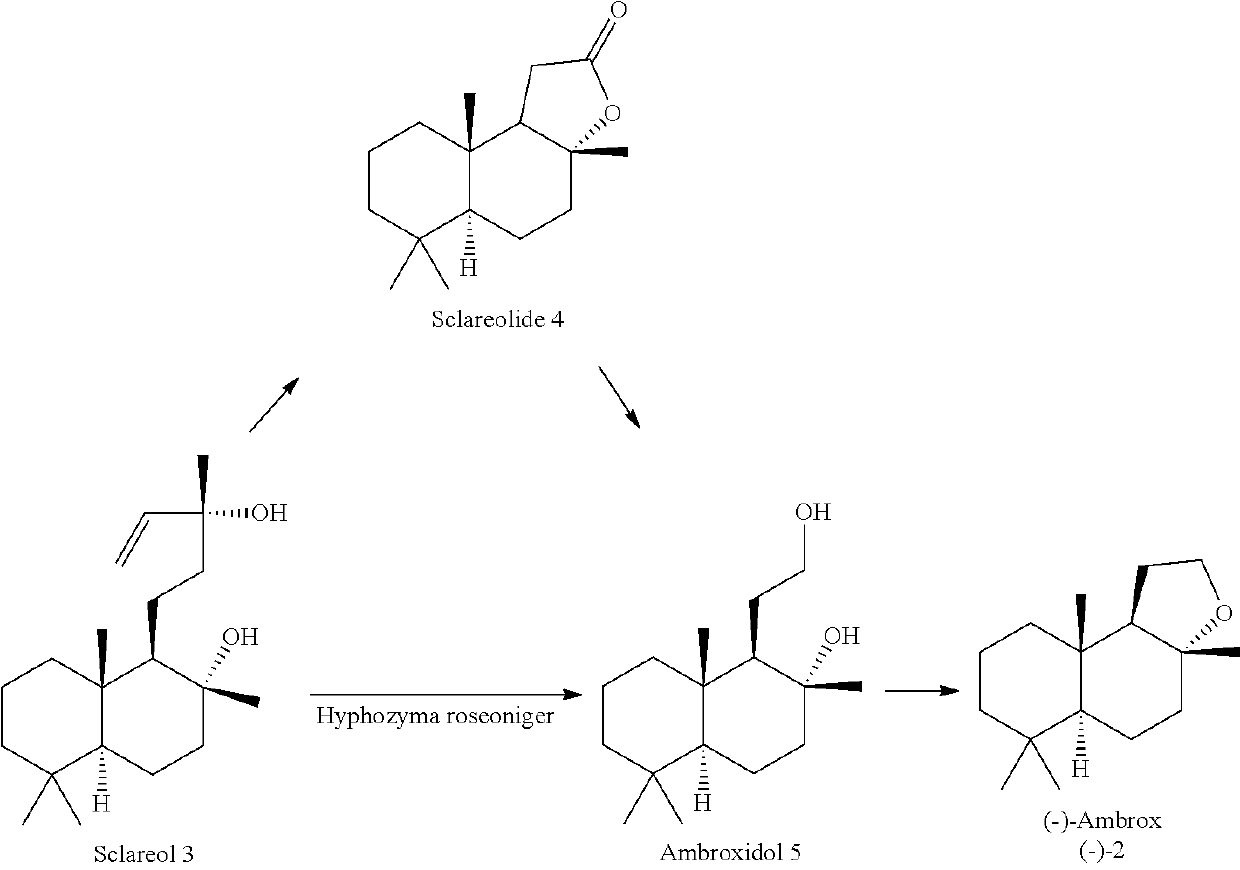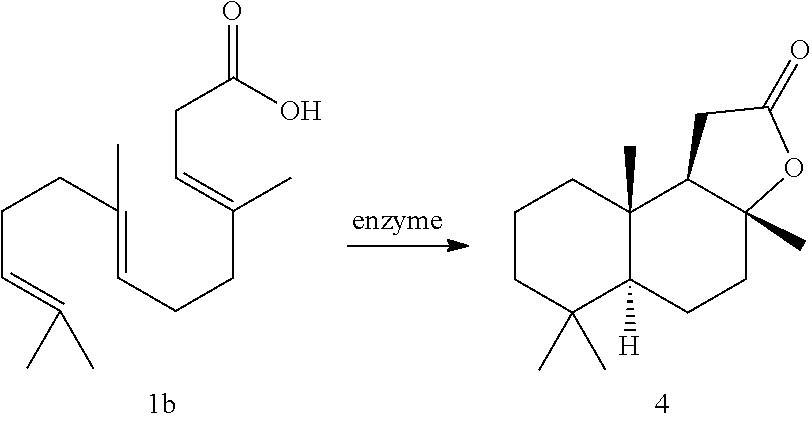Enzymatic cyclization of homofarnesylic acid
a technology of enzymatic cyclization and homofarnesylic acid, which is applied in the direction of lyases, fermentation, biochemical apparatus and processes, etc., can solve the problems of synthesis that requires the use of polluting chemicals and consumes a great deal of energy
- Summary
- Abstract
- Description
- Claims
- Application Information
AI Technical Summary
Benefits of technology
Problems solved by technology
Method used
Image
Examples
embodiment 4
[0042]is employed as the starting material, in particular in essentially stereoisomerically pure form, preferably in a proportion of (3E,7E)-homofarnesylic acid of at least 70 mol %, particularly preferably at least 75, 80 or 85 mol %, most preferably 90, 95 or 99 or 99.9 mol %, based on the total amount of homofarnesylic acid isomers present.[0043]5. The process as per embodiment 4, wherein sclareolide, of the formula IIa,
embodiment 6
[0044]is obtained in stereoisomerically pure form or as a mixture of stereoisomers.[0045]6. The process as per any of the preceding embodiments, wherein the SHC is selected from among[0046]a) proteins comprising a polypeptide with an amino acid sequence as per SEQ ID NO: 2,[0047]b) by deletion, insertion, substitution, addition, inversion or a combination of proteins derived as per a), comprising a polypeptide with a sequence identity of at least 45%, 50%, 55%, 60%, 65%, 70%, in particular at least 75% or 80%, preferably at least 85%, such as, for example, at least 90, 91, 92, 93, 94, 95, 96, 97, 98 or 99%, to the amino acid sequence as per SEQ ID NO: 2; and[0048]c) proteins which are functionally equivalent to a) or b) and which catalyze the cyclization of homofarnesylic acid to sclareolide.[0049]7. The process as per embodiment 6, wherein the functionally equivalent protein comprises a polypeptide with an amino acid sequence which is selected from among[0050]a) SEQ ID NO: 3 to 326...
example 1
Example 1 Cloning of the Zm-SHC and Expression in E. coli
[0244]The gene of the cyclase may be amplified from Zymomonas mobilis with the aid of the oligonucleotides Zm-SHC_fw and Zm-SHC_rev.
Primer:Primer No.sequence (5′→3′)PositionZm-SHC_fwgcgctgtttcatatgggtattgacaN-term(SEQ ID NO: 327)primerZm-SHC_revgcgcttaccctggatcctcgaaaatC-term(SEQ ID NO: 328)primer
[0245]In each case 100 ng of primers Zm-SHC_fw and Zm-SHC_rev were mixed in an equimolar ratio. The PCR with genomic DNA from Z. mobilis (ATCC31821) was carried out following the manufacturer's instructions using Pwo-polymerase (Roche Applied Science) and the following temperature gradient program: 95° C. for 3 min; 30 cycles at 95° C. for 30 sec., 50° C. for 30 sec and 72° C. for 3 min; 72° C. for 10 min.; 4° C. until used. The PCR product (˜2.2 kb) was isolated by agaroso gel electrophoresis (1.2% electrophoresis gel, Invitrogen) and column chromatography (GFX Kit, Amersham Pharmacia) and subsequently sequenced (sequencing primer: ...
PUM
| Property | Measurement | Unit |
|---|---|---|
| concentration | aaaaa | aaaaa |
| reaction temperature | aaaaa | aaaaa |
| reaction temperature | aaaaa | aaaaa |
Abstract
Description
Claims
Application Information
 Login to View More
Login to View More - R&D
- Intellectual Property
- Life Sciences
- Materials
- Tech Scout
- Unparalleled Data Quality
- Higher Quality Content
- 60% Fewer Hallucinations
Browse by: Latest US Patents, China's latest patents, Technical Efficacy Thesaurus, Application Domain, Technology Topic, Popular Technical Reports.
© 2025 PatSnap. All rights reserved.Legal|Privacy policy|Modern Slavery Act Transparency Statement|Sitemap|About US| Contact US: help@patsnap.com



